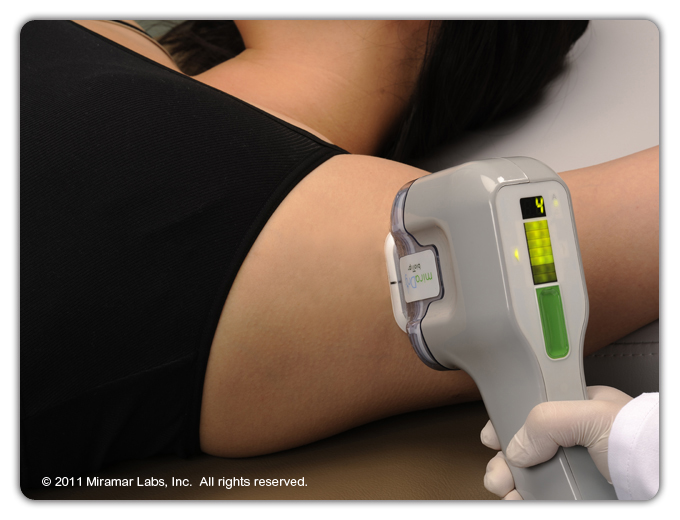


The miraDry Procedure
The miraDry Procedure is performed in the physician's office.
The miraDry Procedure is non-invasive; it involves no surgical incisions or cuts. Treatment is customized for each underarm area with multiple placements of the miraDry Handpiece.
Prior to the procedure, temporary markings are placed on the skin to guide treatment, and local anesthesia is administered to the underarms to maintain comfort.

The total patient appointment time is about 60 minutes, with treatment itself taking approximately 40 minutes. Custom software guides you or your staff through the process, making it easy to conduct the procedure.
Most patients notice an effect immediately after the procedure. Two procedures are typically recommended three months apart to maximize the results and duration.
The miraDry Procedure has a strong safety profile, and there is minimal to no patient downtime. All patients will experience soreness under their arms for a few days after the procedure. Mild to moderate edema under the arms is typical post treatment and lasts about a week or two. Some patients have short-term altered sensation in the skin of their underarms or upper arms, which gradually disappears. Most patients are able to return to work on the same day of the procedure, and can typically resume exercise within several days.
Benefits of miraDry Procedure
- Lasting efficacy
- Non-invasive
- Minimal to no patient downtime
- Strong safety profile
- Straightforward, in-office procedure
- Can be performed by Physician Assistant or Nurse Practitioner (state law dependant)
Note: The miraDry System is indicated for use in the treatment of primary axillary (underarm) hyperhidrosis in adults 18 and over. It cannot be used to treat hyperhidrosis elsewhere on the body, including the hands and feet.
The miraDry System is contraindicated for patients:
- With heart pacemakers and other electronic device implants
- Who need supplemental oxygen
- With known resistance to or history of intolerance of local anesthesia including lidocaine and epinephrine





